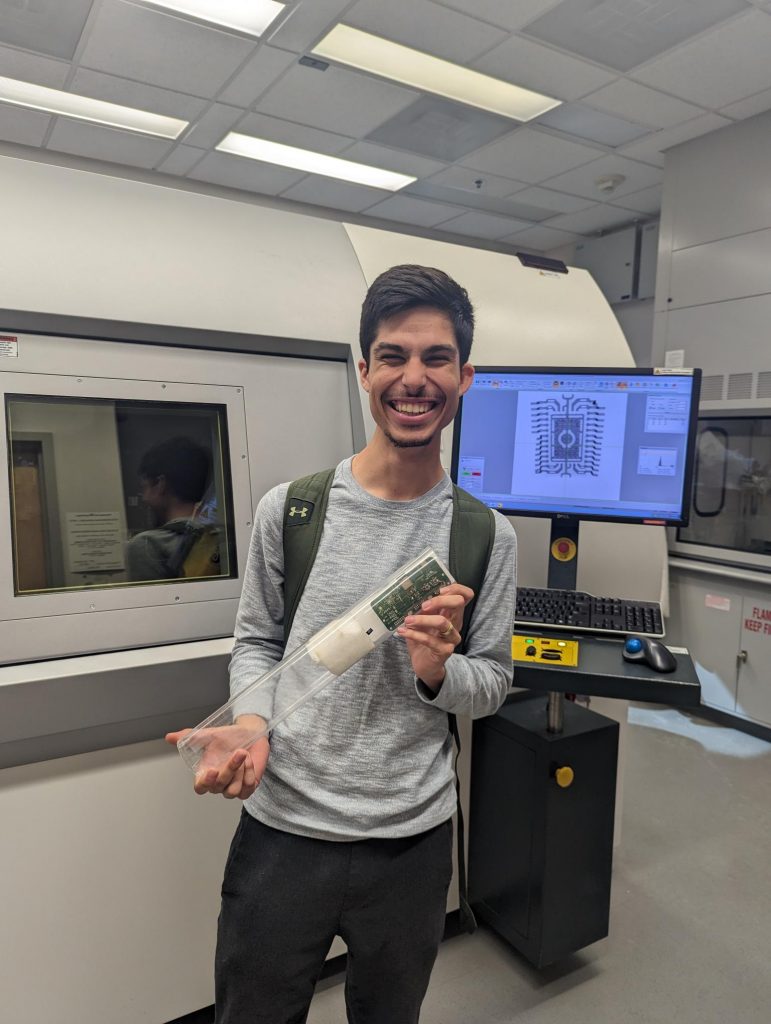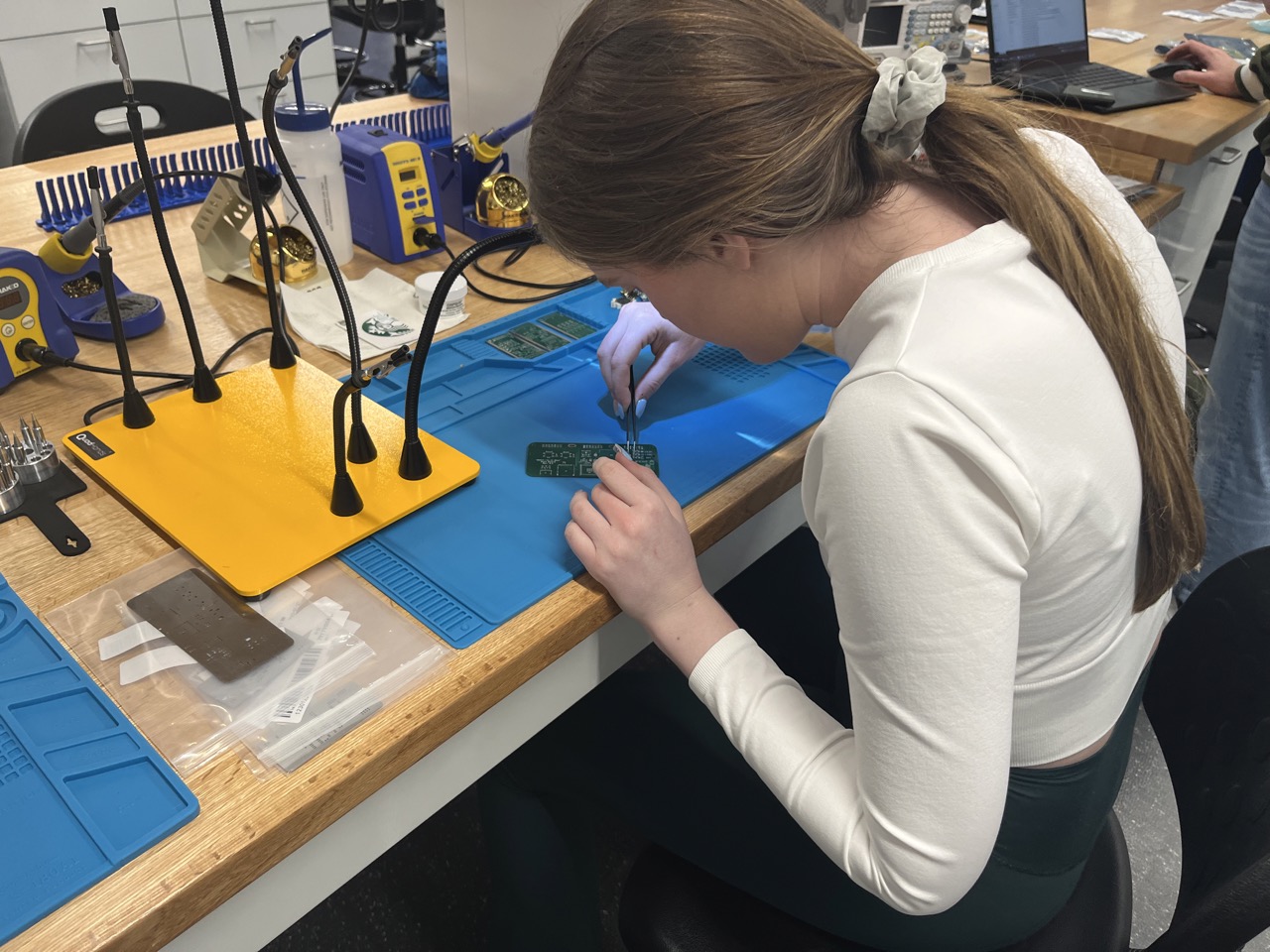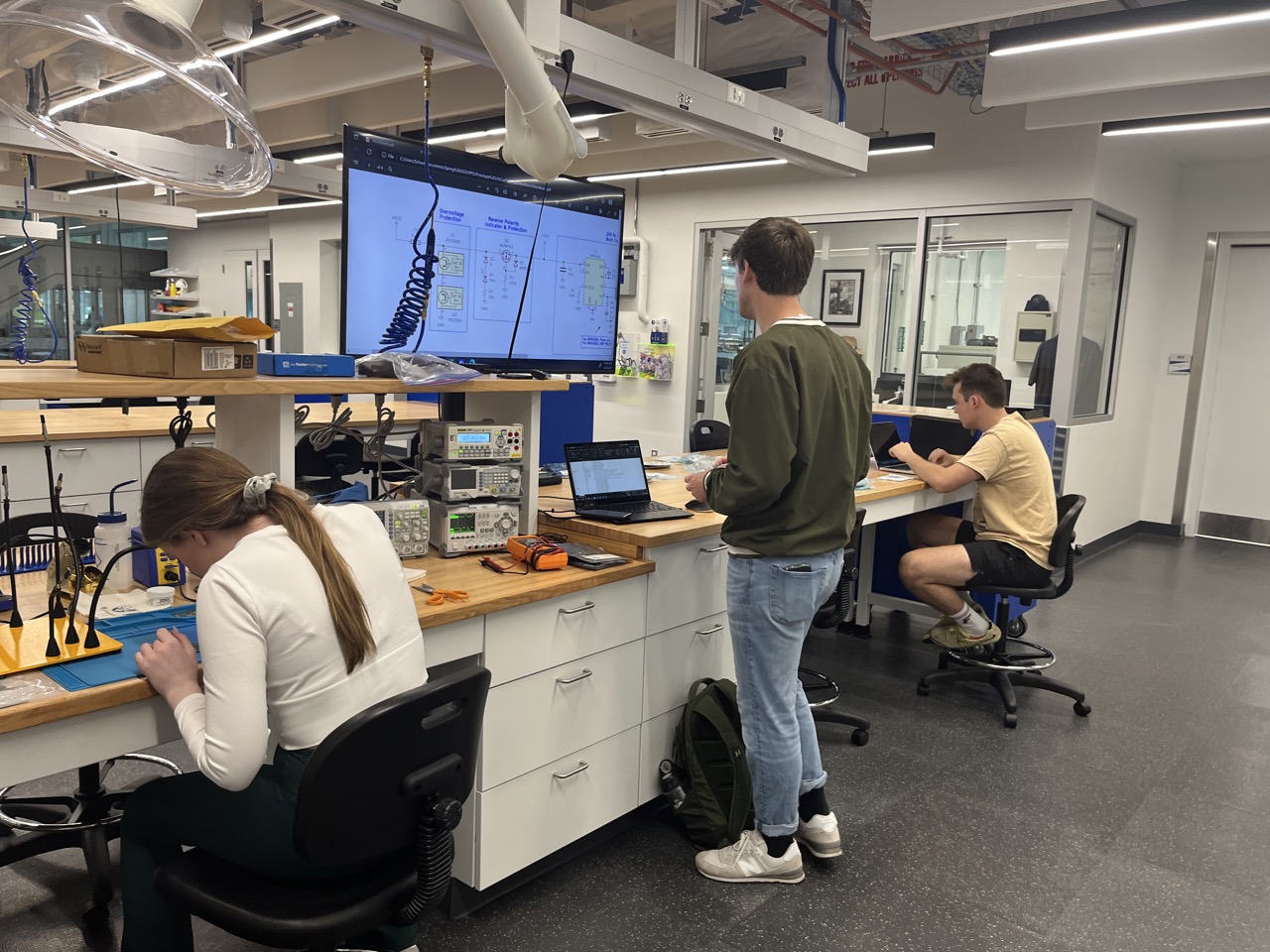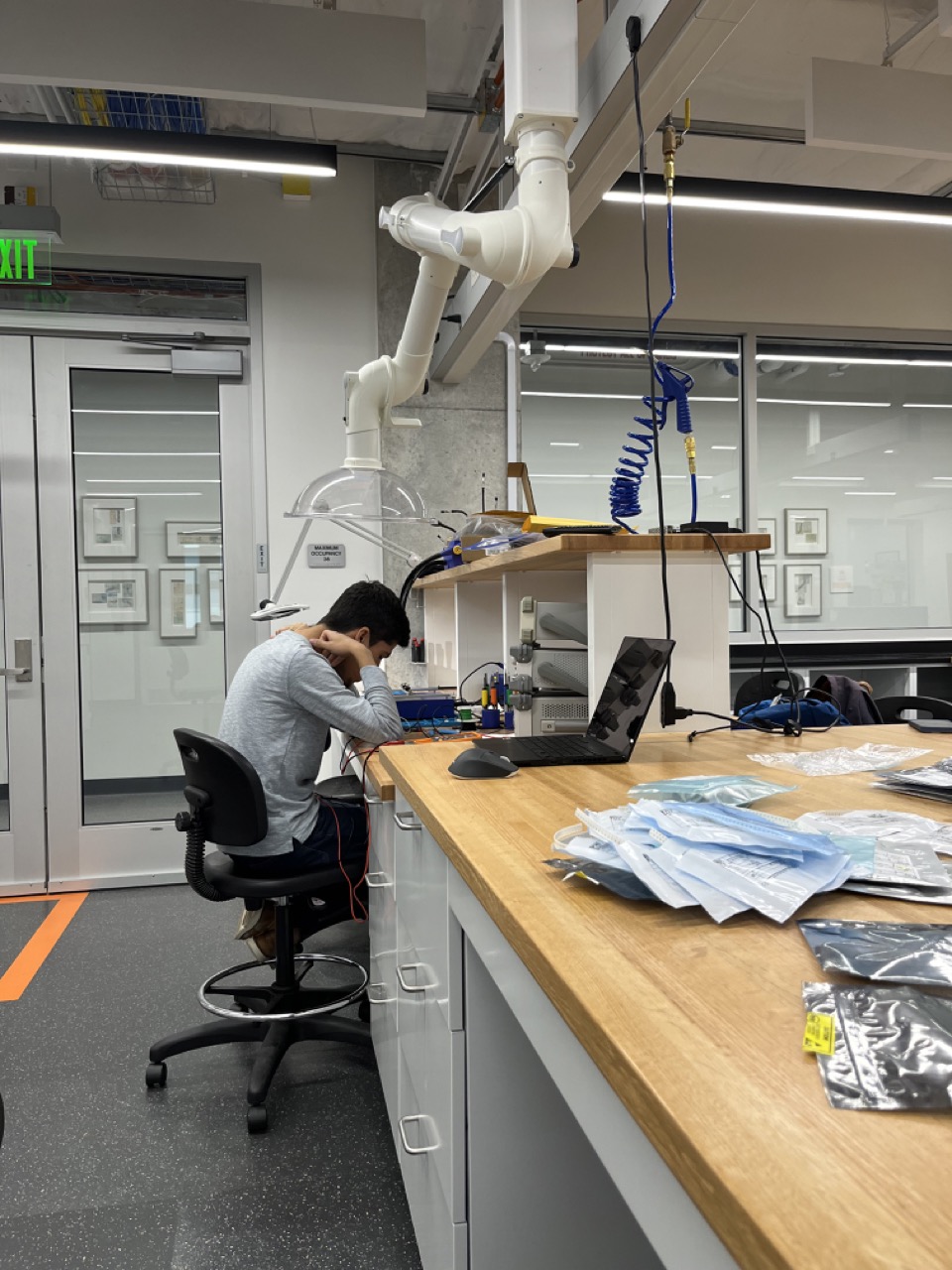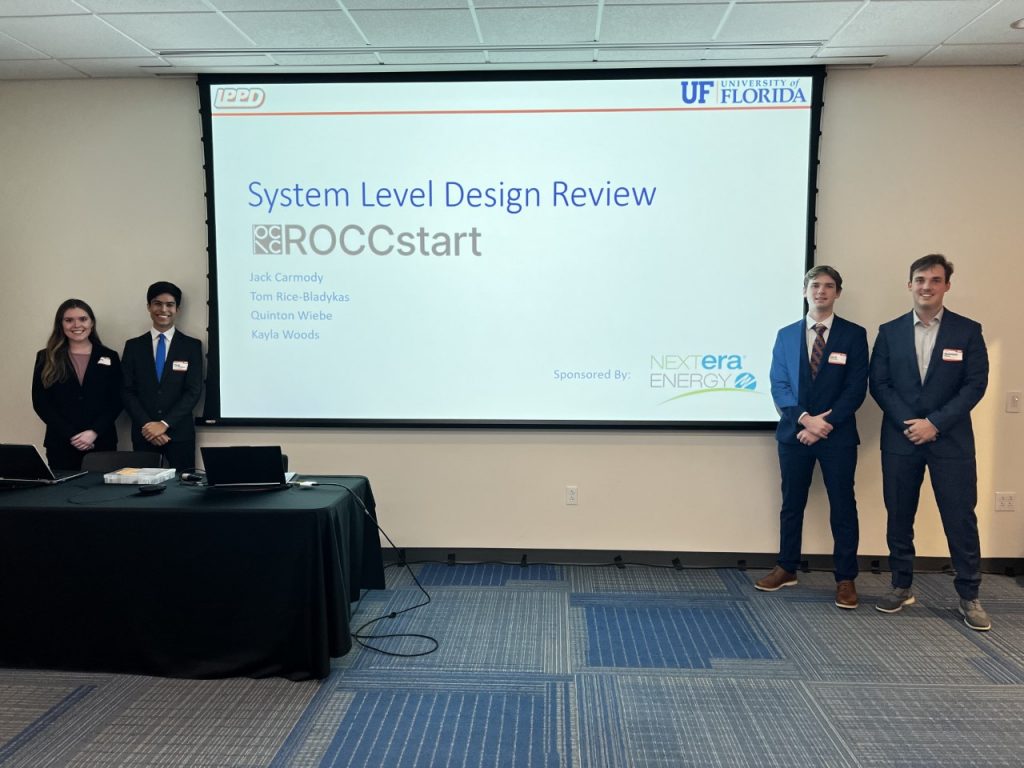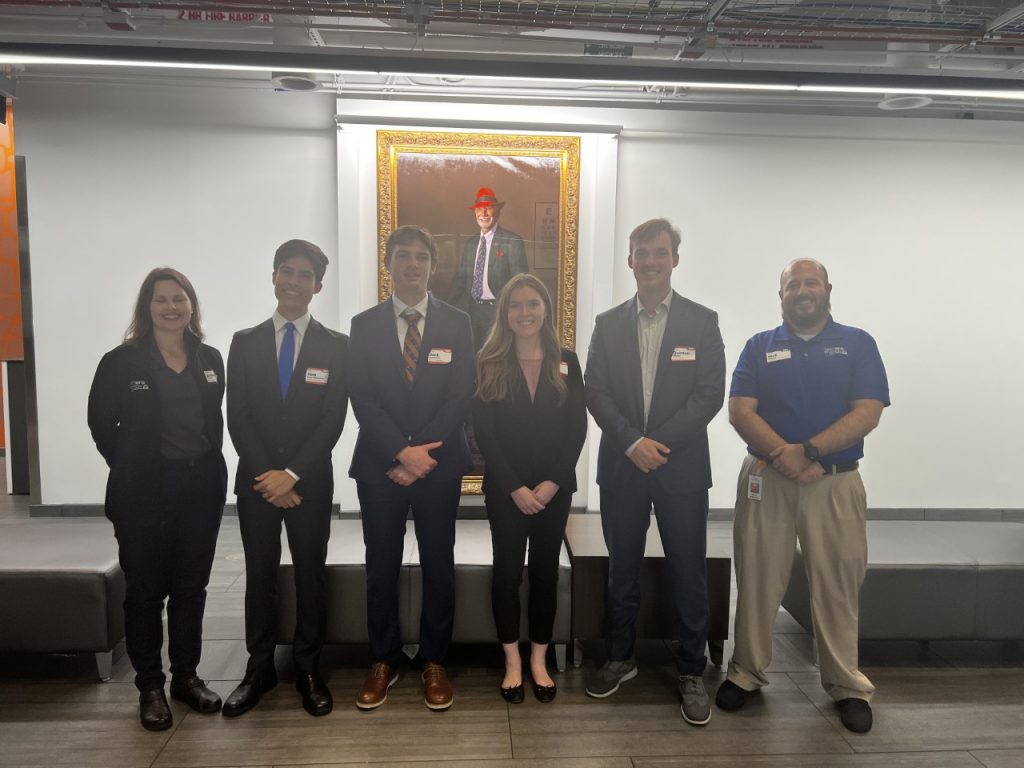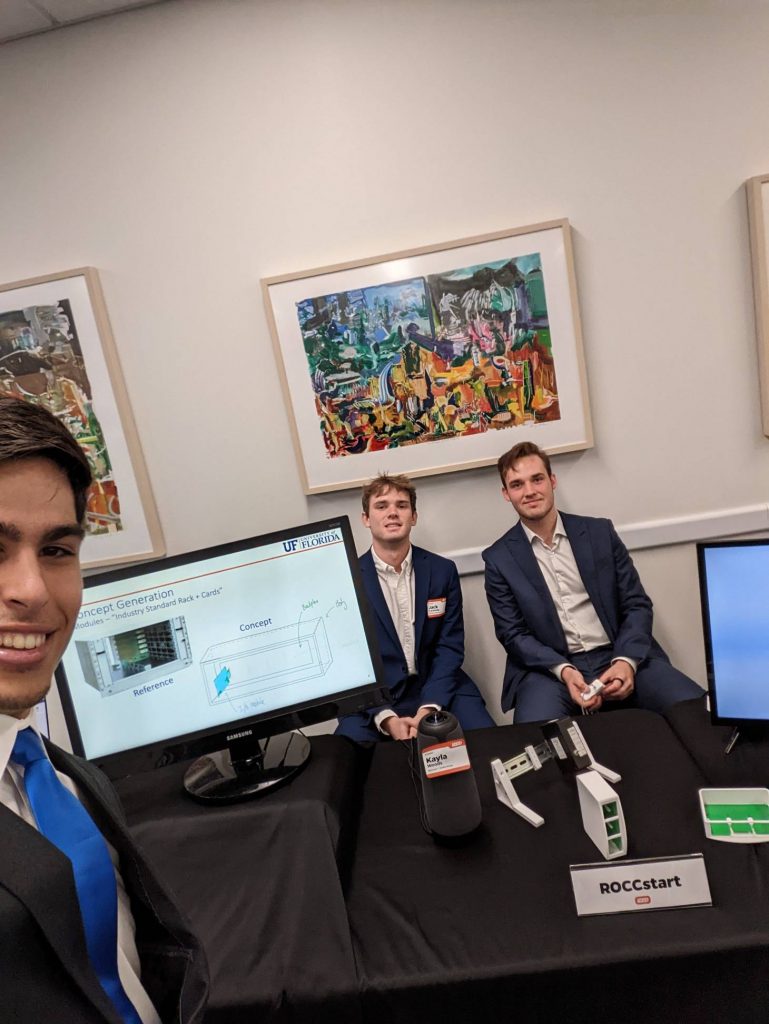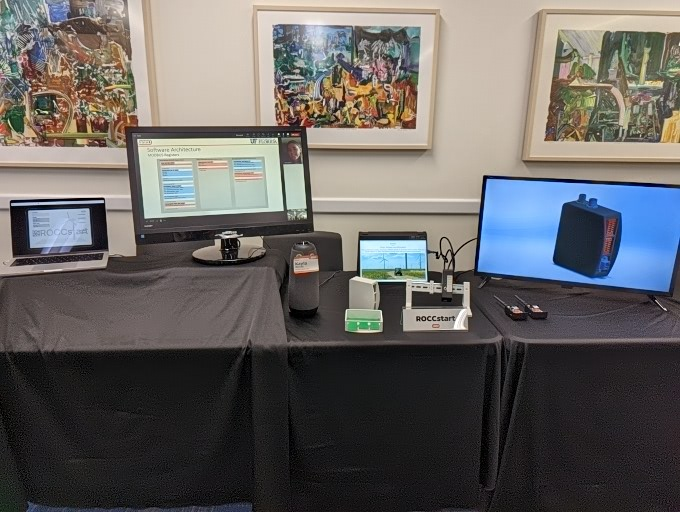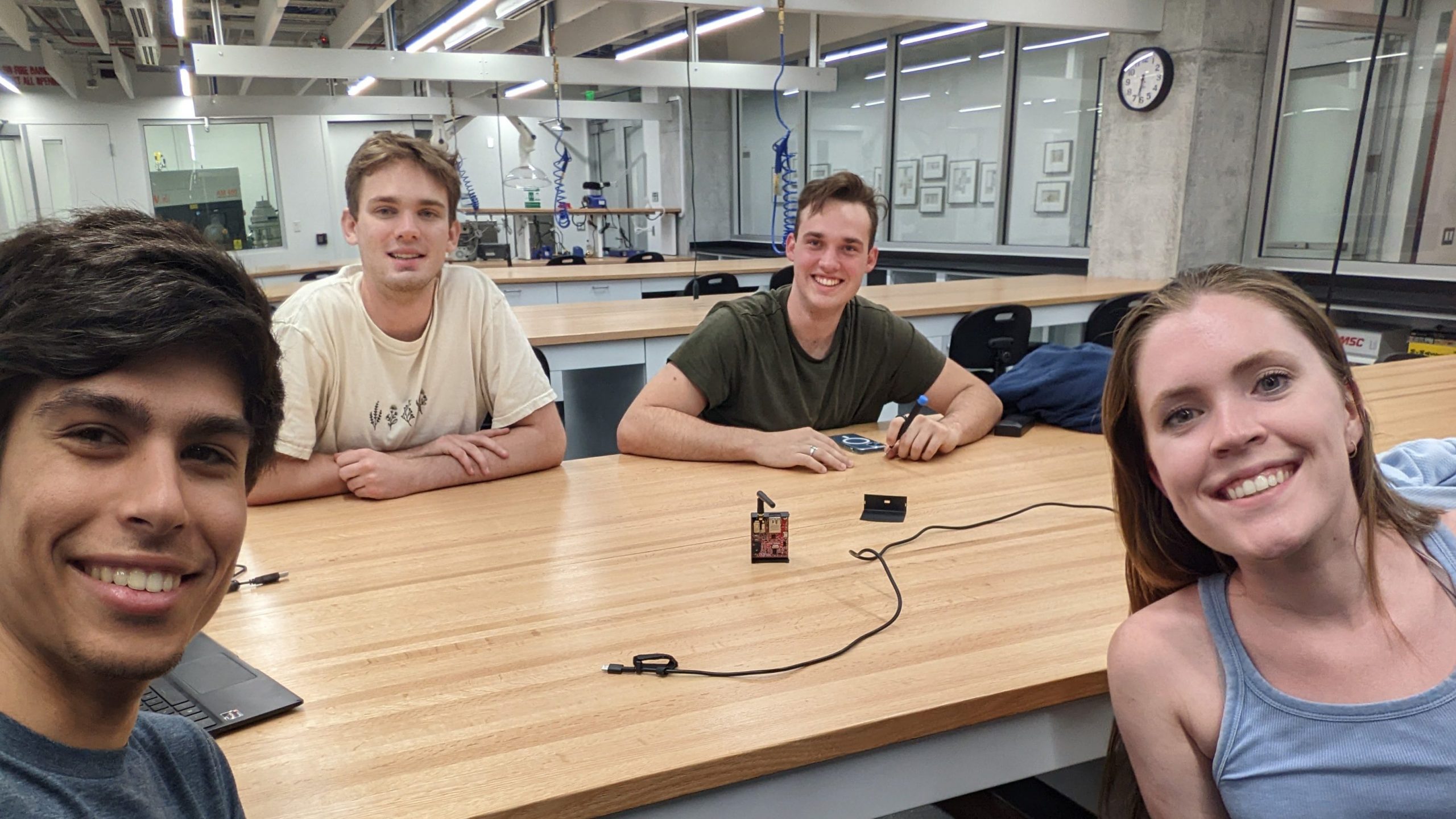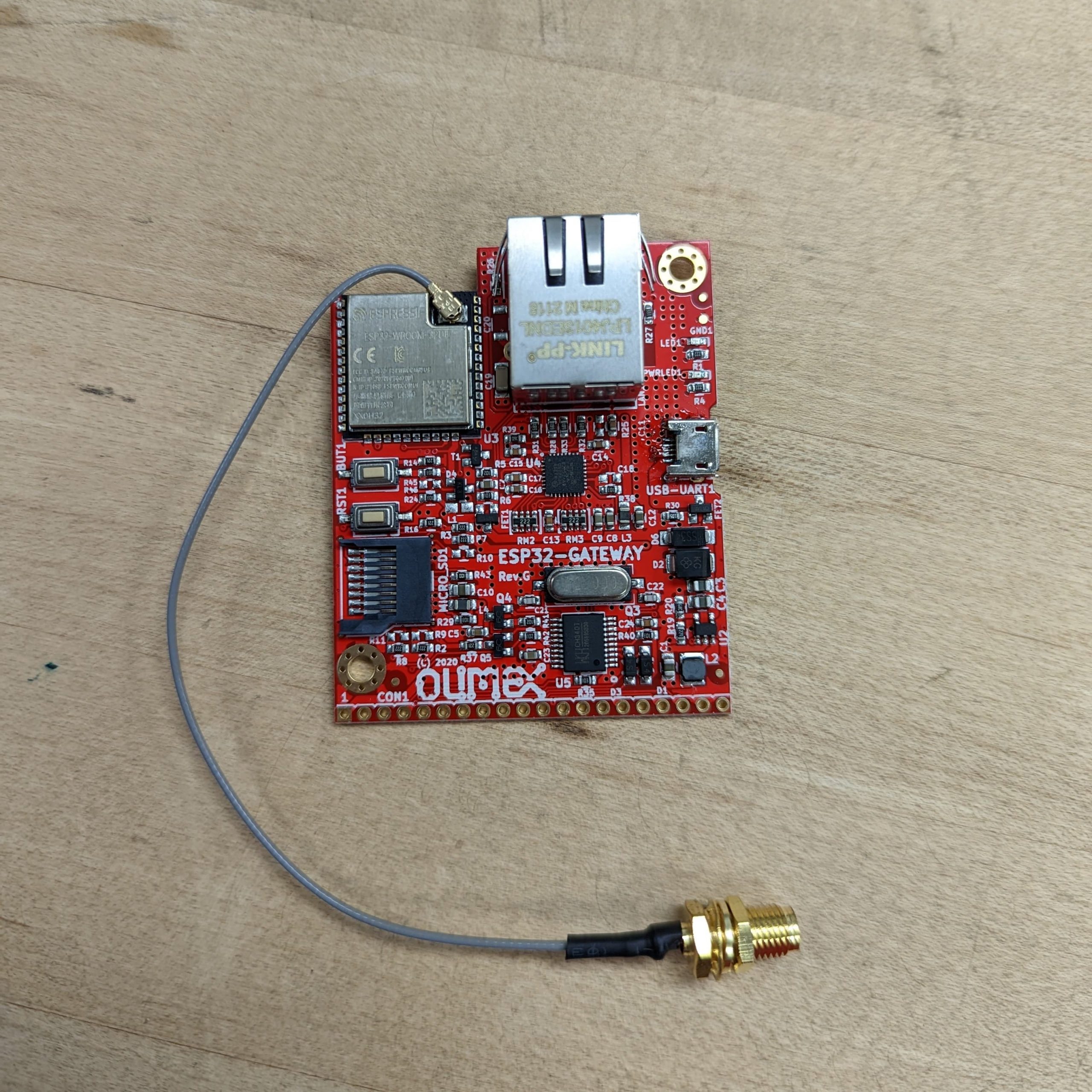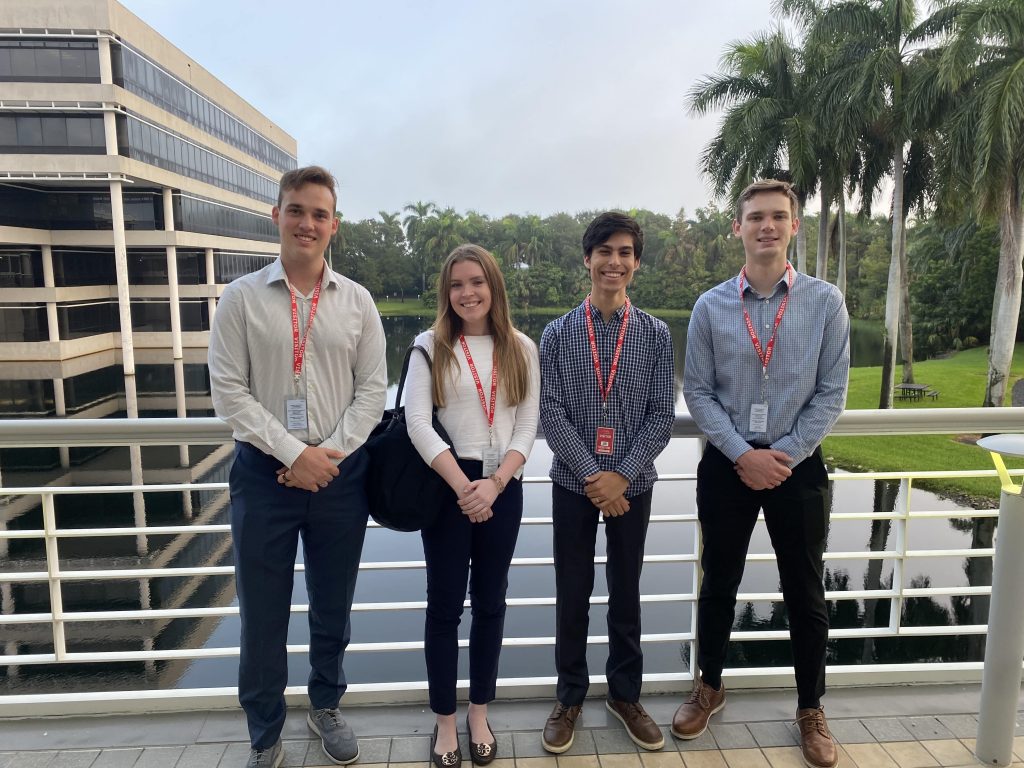This week was an absolute blur! We started the week off with renewed hope from the failure analysis lab regarding our old prototypes. After reviewing the results from our two failed prototypes, it appears that at least one of our modules was malfunctioning due to malformed solder joints. The second module, with no obvious signs pointing to why it failed, were either dead on arrival or destroyed by static electricity. We decided to adhere to stricter ESD protocols during device assembly, as well as making an attempt at closely following the reflow profile specified by the solder paste manufacturer moving forward.
On Monday, we put together a third prototype and a full set of I/O modules. After meticulously placing the SMD components, following a strict reflow profile, and placing the rest of the components, would the boards power on and function? Does everything work the third time?
Apparently, yes! The board fired right up with a power supply attached, and with no smoke or fire, our jobs got a lot easier. With the board powering on, we were able to upload a test program to the board and confirm that all basic functionality was possible.
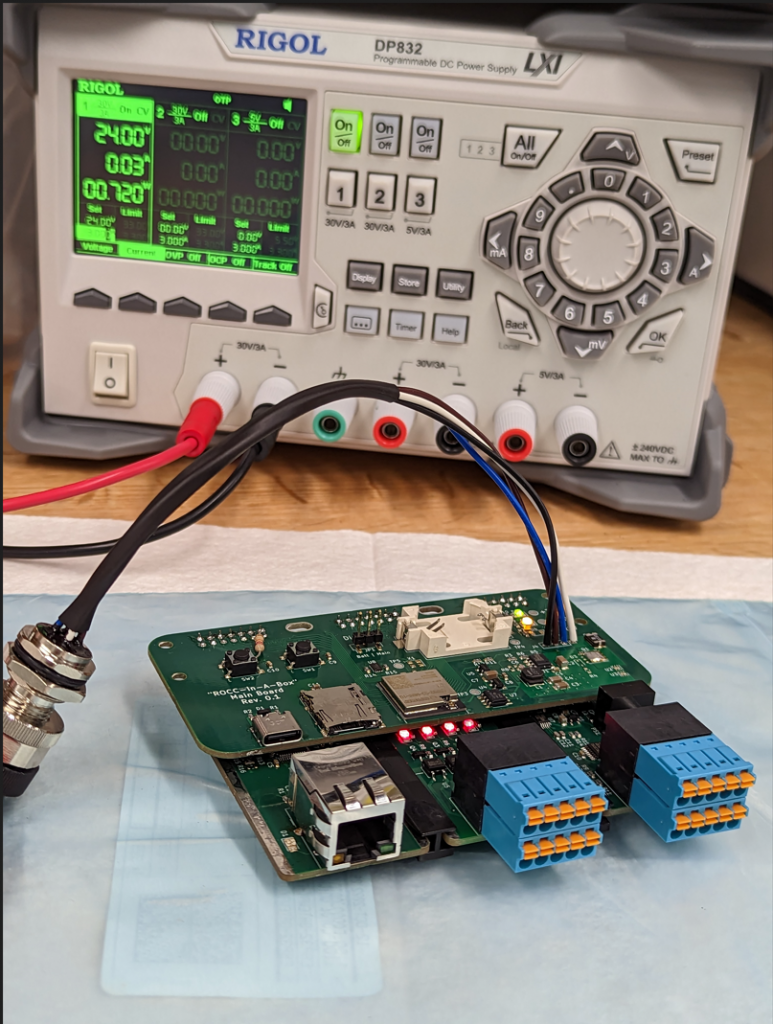
With a singular assembled prototype available to the team, this allows the rest of the team to test software and mechanical integration in the project. With that, the week was already off to a great start.
…but then, Tom decided to assemble a second prototype!

With both prototypes fully assembled and appearing to be functional, we feel much better about our project and we feel we will be following the project timeline almost perfectly.
Until next week!

